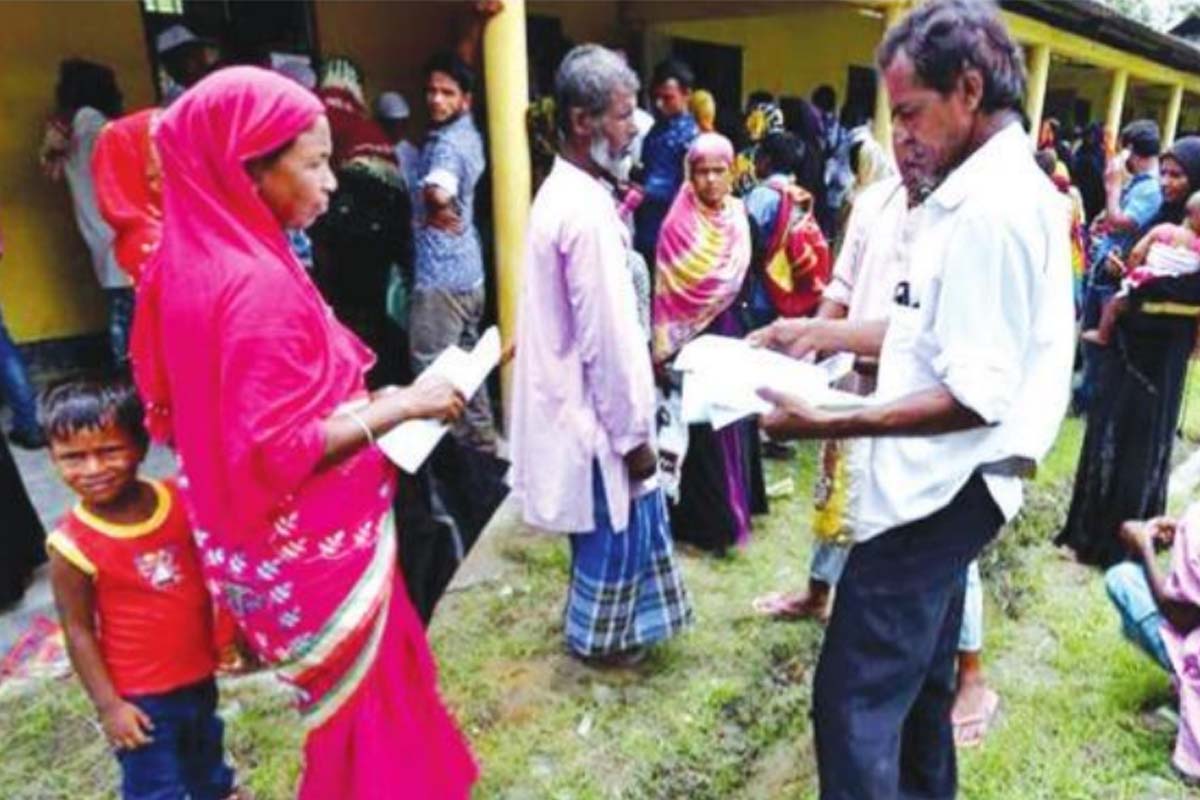The most powerful political voice of Assam, Himanta Biswa Sarma recently said that his government was going to reject the final list of the National Register of Citizens in his state as “erroneous”, “conservative” and “wrongful”. Rejecting a task of such a mammoth scale, which was completed under the direction of Supreme Court involving huge public resources, reflects the impetuosity of the government and its shifting political agenda. Likewise Amit Shah’s recent sojourn in the Northeastern states to discuss the Citizenship Amendment Bill with various stakeholders and then hinting to exempt some states is equally perplexing. These twin projects were primarily for Assam visa-vis the North-east to resolve the “foreigner” issue, and this wavering stance not only indicates the government’s indecisiveness but also echoes its inability to understand the political dynamics of the region as was the case in the past.
Identifying “foreigners” through NRC has been contentious in Assam and was not an acceptable proposition for its Bengali community who were the prime targets of this exercise as immigrants from East Pakistan, now Bangladesh. Movement of people in Assam is implicit to its geography and the boundary policy of the erstwhile colonial state. The shifting outer boundaries of Assam since colonial times implied a particular configuration in the post-colonial times, like who should be a citizen of Assam and how should it be determined. Consequently, the first Census data of 1951, which defined the demographic profile of states in independent India, was not considered enough in Assam. The specific issue of cross-border immigration simultaneously raised an additional question of determining the citizenship of an individual in the state. It should be noted that like the other states of Punjab, West Bengal and Tripura, the immigrants in Assam at that point of time, had crossed an unrealistic political boundary called the Radcliffe Line not by choice but by compulsion. But unlike those states, immigrants in Assam were perceived as “Bahiragata” and were subjected to the larger question of Assamese identity and culture.
Advertisement
Hence an Immigrants (Expulsion from Assam) Act was introduced in 1950, and subsequently the NRC was made in addition to the Census record in 1951to distinguish between “bona fide Indian citizens and foreigners in Assam”. In 1955, the NRC was concretised under India’s Citizenship Act and subsequently the earlier Immigrants (Expulsion from Assam) Act was repealed in 1957. When such exceptional and exclusionary citizenship policies were adopted in Assam against immigrants, the consolidated Bengali Muslim population decided to identify themselves with the Assamese speaking community, making vulnerable the existence of the Bengali Hindu community as “outsiders” in Assam. They were targeted under the jingle of “Bongal Kheda”, and marginalised en masse in all the social, economic and political aspects of Assam, by blurring any distinction between an immigrant and a bona fide Bengalispeaking citizen of India.
By the late 1970s, the political movements of the All Assam Students’ Union and All Assam Gana Sangram Parishad turned into mass hysteria in Assam, which caused a genocide in Nellie in 1983, in which 3,000 innocent lives perished. In the same year, India was forced to introduce another exceptional Illegal Migrants (Determination by Tribunals) Act in Assam. Finally the Assam Accord in 1985 resolved the issue by agreeing on the cut-off date of 25 March 1971 to determine “foreigners” in Assam.
Politics of migration in Assam has been used by all political parties to their advantage. As migrants became “vote banks” for most of the political parties in Assam, there was hardly any honest approach to change the status quo. However, in the 1990s, with the emergence of the Bharatiya Janata Party, a fresh narrative on rising Bengali Muslim population began in Assam, and led to another exceptional concept of “D” (doubtful) voter category in 1997.
In 1998, a white paper on “Illegal Migrants in Assam” was brought out by then governor of the state, SK Sinha, which triggered a number of studies and reports to estimate the Muslim population in Assam. Almost all studies based on the Census data showed a staggering increase of the Muslim population, which was easily explained by illegal immigration from Bangladesh.
The issue has remained politically sensitive ever since, with Assamese xenophobia building up against the Bengali Muslims as the most problematic “Miyas” or “Bangladeshis”. They are seen not only as a major threat to Assam and the livelihood of “Assamese indigenous communities”, but also as a “rising fundamental force”. This situation had forced the Assam government to skip the enumeration of the 1991 Census, but could not prevent Assam from becoming a battle field again with periodic violence and killings.
In 2005, a tripartite meeting was held among the central and state governments with AASU leaders to decide on the updation of the NRC list. The Census data 2011 officially confirmed a 34 per cent rise of Muslim population in the state, which was the highest in India, following which in 2013, the Supreme Court of India directed the NRC process. The NRC completed in August 2019 excluded 1.9 million people, which astonishingly excludes about 1.4 million Hindus, which is why the BJP and every other stakeholder are against it. This unanticipated list has raised stormy debates, not only on the status of the excluded people but also about the process of finalising the list itself.
Reports cite large scale corruption in the NRC updation process and the role of mushrooming middle men, who largely manipulated and produced false data and documents. The anxiety of being targeted as “foreigners” forced even the poorest of the poor to exhaust their savings to produce documents. The list thus reflected many absurdities like omission of a child but not her parents, and exclusion of who had served in the Army and government for decades. The task therefore caused inconvenience and embarrassment to the Assam government in many ways, by broadly negating the narrative of rising illegal Muslim immigrants in the state.
A disappointed Biswa Sarma admitted that many “indigenous people” got excluded from the list, while “illegal intruders from Bangladesh have been included”. He also expressed its serious implication in Assam in its political and power relations in future with many Assembly constituencies going to the “hands of other people”. On the other hand, both detention and deportation being impossible, the Assam government is in a fix about the fate of the excluded people. To avoid many such discomforts, Sarma expediently rejected this entire exercise and demanded a pan-India NRC law with a single cut-off date, where Assam will be one out of the 29 states. He justified this by citing a CAG report, which supposedly detected huge “irregularities and anomalies” in the NRC updation process. By taking the debate to national level, Sarma has deflected the original objective of the NRC, which aimed to understand the “foreigner” issue in Assam in an exceptional frame, while immigrants continue to remain political targets in the state.
All said and done, this failed project has already consumed a staggering amount of public funds — more than Rs 1,600 crore, which is about 1.9 per cent of Assam’s total expenditure budget in 2018-19, and about 35 and 21 per cent of the state’s health and education expenditure budget respectively. It has distracted 52,000 government officials from discharging other important developmental works. It also created 2,500 NRC Seva Kendras and made 32.9 million people across all age groups to undergo trauma for months to prove their citizenship. For the excluded group, the trauma has been manifold with the uncertainty of becoming stateless and spending the rest of their lives in detention camps.
In this context, the idea of a panIndia NRC project sounds worrisome and ridiculous. The NRC project was undertaken on issues specific to Assam and those do not exist in other states of the country. Is this a political agenda to divert attention from the country’s actual economic crisis, or an additional device to exercise surveillance over citizens, especially over the minority communities? The experience of Assam says that this is a very exclusionary exercise in the larger context and is going to cause deeper ruptures in relations between the state and society. It will specifically add to the burden of the country’s fiscal expenditure at the time of economic hardship. Will India’s taxpayers be ready to part with their money on such political quirks?
The writer is associate professor, North East India Studies Programme, School of Social Sciences, Jawaharlal Nehru University, New Delhi.











